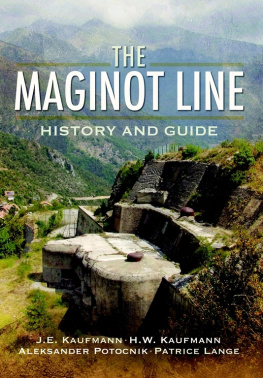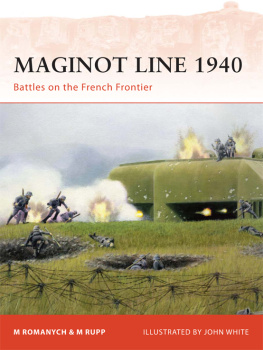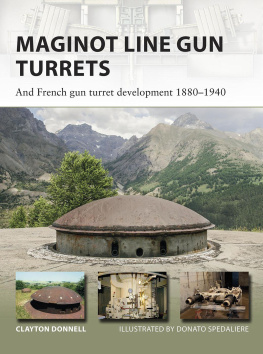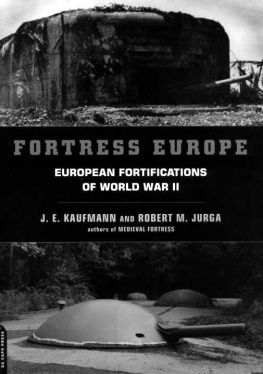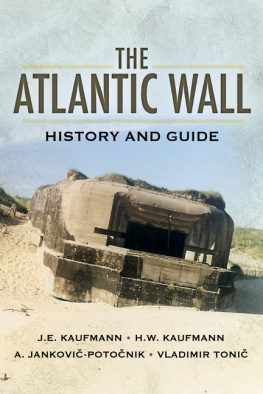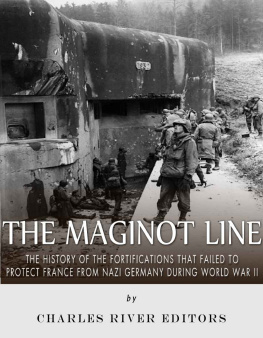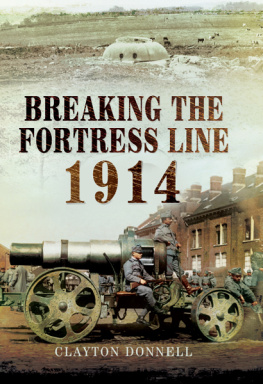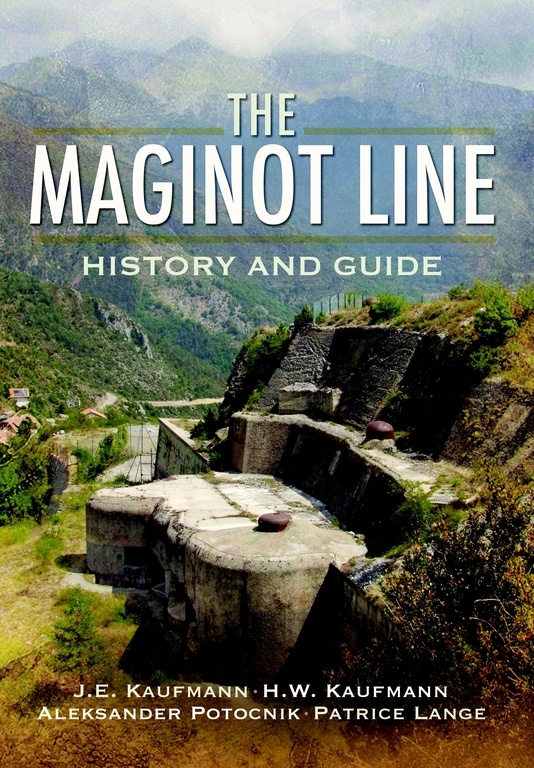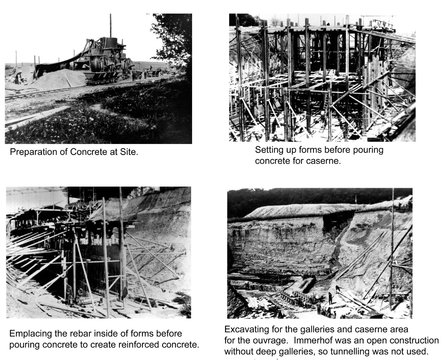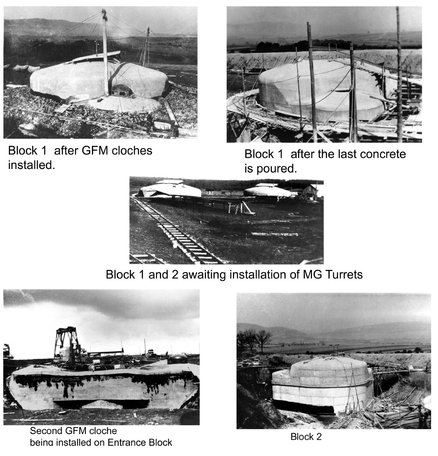Acknowledgements
Many people helped to make this work possible. In most cases those who work at or operate the various fortified sites are volunteers, and many of them donate their own money and free time to helping restore and operate the various sites and that is why opening dates vary from year to year and are often limited.
We would like to thank the following people: Denis Cassez, Casemate du Mont-des-Bruyres; Marcel Caty, PO La Salmagne; Maxime Dupont, PO La Fert; Vincent Vermeulen, GO Fermont; Jean-Marc Gratianne, Casemate Morfontaine; Henri Dossot, PO Bois-du-Four; Jean-Marc Spieles and Philippe Schmaltz, Cattenom Forest and GO Galgenberg; Re-enactors of the group Mmoire Lorraine du 168me RIF; Marguerite Cendron; Jean-Claude Cendron; Romain Deseau, Perrine and Guillaume Henrion, PO Immerhof; Robert Schweitzer, Abri Zeiterholz; Francis Diehm, Fort de Guentrange; Robert Varoqui, GO Hackenberg; Charles Ledig, GO Michelsberg; Sbastien Rao (also for photos of insignia collection) and Jean-Marie Netzer, PO Bois-de-Bousse; Jean-Luc Franois, PO Bambesch; Patrick Keuer, Barst (walking tour of Sarre defences); Ludovic Malgouverne, PO Rohrbach; Johann Charre, GO Simserhof; Robert Haag, Dambach-Sud; Benot Heinrich, Dambach-Neunhoffen; Olivier Terver, Abri Bichel-Sud; Raymond Decker, ADFM (Verny); Yannick Chicoix, GO Four--Chaux; Antoine Schoen, Jean-Louis Burtscher and Marc Halter, GO Schoenenbourg; Marcel Decker and Roland Muller, Abri Hatten; Joseph Heintz and Antoine Schoen, Casemate Esch; Philippe Curtet, Casemate dOberroedern; Bernard Bour and Lucien Renaudin, Feste KWII; Bertrand Pfaff, Casemate dAschenbach; Flix Dimitric, Casemate des Vernes; Franois Garguilo, PO Gondran; Philippe Lachal, AP Larche; Viviane Bendersky, PO St-Ours-Bas; Daniel Dubois, GO Roche-La-Croix; Thierry Noyez, GO Roche-La-Croix and Tournoux Fortress; Dorian Soulies, PO Frassina; Nicolas Milano, GO Rimplas; Guillaume Laval, GO Agaisen; and Laurent Icardo, GO Cap-Martin.
In addition, we would like to thank the following for additional information and/or technical details: Bernard Bour, Jean-Louis Burtscher, Marc Halter and Caspar Vermeulen. Wartime photos were provided by Jean-Louis Burtscher (also illustrations) and Dominique Kemmel. Details on Gamma Gun from Martin Rupp and Marc Romanych. Some recent photos were kindly provided by Anton Marn. Reference material or information was also provided by William Alcorn, Franois Hoff, Alain Lecomte, Michal Sramour, Lee Unterborn and J.B. Wahl.
Patrice Lang thanks Grard and Mariette Lang, and Alexandra Antunes for their support. Aleksander Jankovi-Potonik thanks Mateja Perpar for her support, and Anton Marn and Alenka Sever for their assistance. We would also like to thank our reader, John James Stokes.
Appendix I
Construction Phase Problems, 1930 1935
Keeping the Maginot project secret during the construction period proved to be quite a challenge for the French military. Most of the French companies that won the construction bids for the Maginot Line brought in workers from various parts of France as well as foreigners. These workers were either housed by locals and/or in construction camps with wooden huts and basic facilities. Since this was the time of the Great Depression, they were made welcome in Alsace and Lorraine because they boosted the local economy. However, the foreign workers presented a security problem. The army engineers, who were present to oversee the work, also posted security details to guard the sites, which were often concealed. Yet despite camouflage and the secrecy, information leaked out. By 1937 German intelligence had detailed information on the Maginot Line. Some of the plans they obtained were for projected work that was never done.
Early construction phases at PO Immerhof. ( Photos from Collection of Immerhof )
Final construction phases at PO Immerhof. ( Photos from Collection of Immerhof )
In nearby towns and villages the peaceful routine of daily life was often shattered when the workers descended on them in their free time and engaged in drinking sprees and brawls. This was especially a problem in areas where there was no nearby city like Thionville, where workers could let off steam.
Appendix II
Pre-war Occupation and Arming of the Ouvrages
Fortress troops took up positions in the Maginot ouvrages during the German reoccupation of the Rhineland in 1936, in the 1938 Czech crisis, in the German occupation of the rump of the Czech state in 1939, and finally during the Danzig Crisis of August. Reservists, many of whom resided in the border areas, brought the garrisons up to strength during these periods. Normally, between 1936 and 1939, crews were quartered in a nearby military camp, often within walking distance of the ouvrages, such as at Camp de Veckring (GO Hackenberg) and Camp de Schoenenbourg (GO Schoenenbourg). In other cases the camp was not close by. For instance, Camp de Cattenom was at an inconvenient distance from PO Immerhof, which later used Camp de Hettange. The commander of the ouvrage normally assigned 30 50 men to stay in a nearby surface caserne of light construction (usually wooden buildings) about 100 metres from the ouvrages entrances. The security detail also maintained the equipment. This small temporary barracks area remained in use until the garrison was ordered into the ouvrage.
After the war began crews made final improvements to the Maginot defences by installing additional obstacles. As the border villages were evacuated, the ouvrage crews were able to test-fire their guns. Before the war they could only train with their assigned types of weapon in special camps with firing ranges. The ouvrages remained on the national power grid as long as possible. During the first year of the war the old manual breech on some 75mm Mle 1932 guns was replaced with a semiautomatic breech. One major modification the conversion of machine-gun turrets into mixed-arms turrets was only partially implemented by June 1940. In most of these turrets the fourth embrasure was drilled, but the 25mm guns were delivered and actually installed in only 14 out of the 61 machine-gun turrets by June 1940. The equipment for the 60mm mortar for the lance-bombe cloche was never ready for installation, so these positions without armoured covers remained a liability.
Appendix III
Weapons and Equipment
The Maginot Line employed a small variety of weapons and equipment. Ouvrages mounted no heavy artillery even though some large-calibre weapons had been considered during the planning stages. The largest artillery pieces were old 120mm guns mounted on platforms on the surface of the ouvrages of Hochwald and Schoenenbourg to allow some of the gunners in casemate blocks an opportunity to fire back at the enemy during the Phoney War. In the 1930s engineers replaced the short-barrelled German 100mm TK guns in the twelve gun turrets of the old forts of Guentrange and Koenigsmacker with the reinforced long-barrelled versions taken from other festen around Metz. These weapons increased their ability to support the Maginot Line Proper. Battery Number 6 at Feste Kaiser Wilhelm II was equipped with 105mm shield guns.

